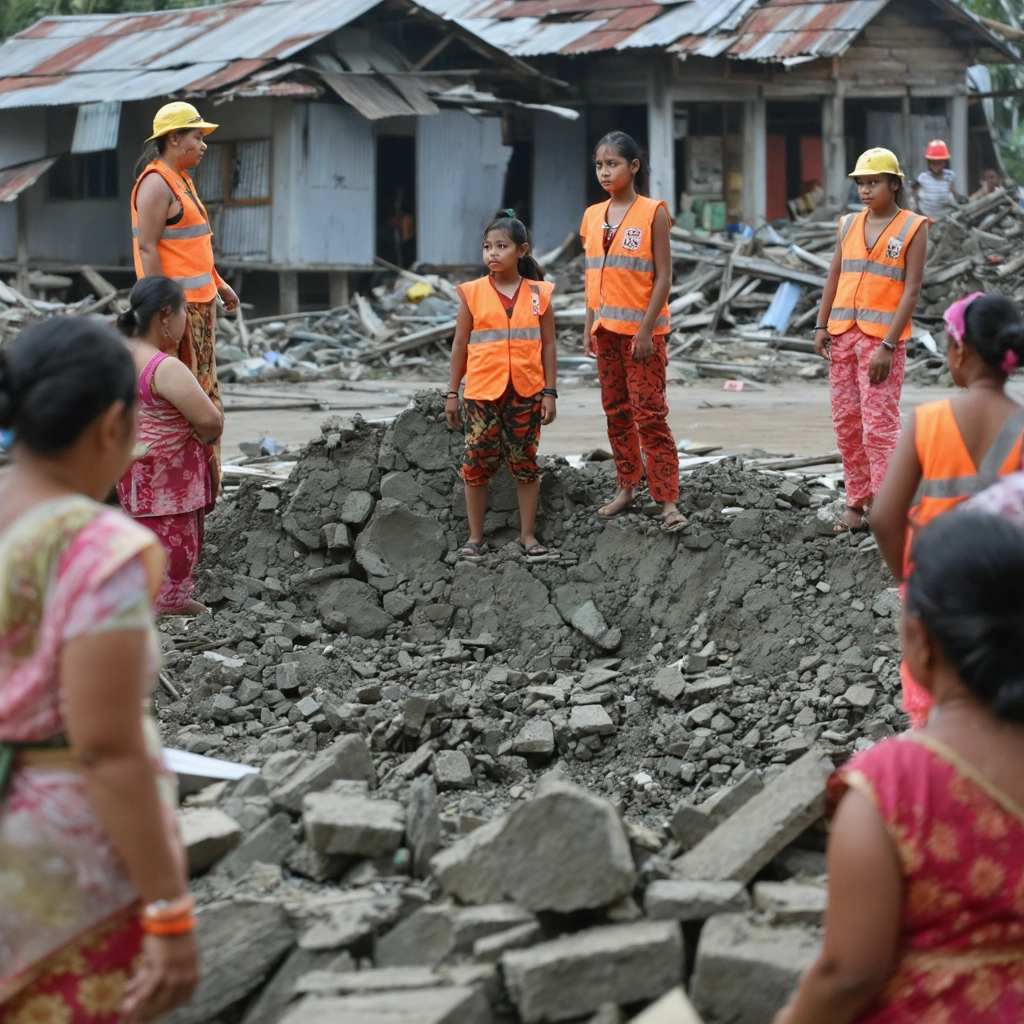
Introduction and the Groundbreaking Myanmar Event
The 7.7 Myanmar temblor shook communities and altered lives using tremendous force and energy. We witnessed trembling ground and collapsed structures, and felt communities rally for survival. Moreover, the earthquake raised urgent questions regarding disaster preparedness in Southeast Asia and California. In this narrative, we recount eyewitness accounts, explore policy shifts, and suggest clear strategies to improve response systems. Consequently, experts, emergency managers, and community leaders gathered practical recommendations. In addition, local residents learned the essential nature of timely warnings and readiness drills. Therefore, we now analyze the earthquake impacts in detail, emphasizing a proactive approach to preparedness.
The Immediate Impact and Community Response
In the immediate aftermath, communities united as first responders and local volunteers acted quickly. The urgency transformed chaos into a coordinated effort. Furthermore, emergency agencies mobilized with determined energy. In addition, residents shared both grief and hope, which sparked a nation-wide dialogue on how to better prepare for future catastrophes. As the disaster unfolded, citizens and government entities challenged existing protocols. They organized community drills and evaluated response techniques with renewed enthusiasm. Naturally, family networks, schools, and local organizations embraced practical steps toward resilience.
Key Lessons and Policy Implications
Courage and determination guided the lessons learned from the earthquake. Firstly, the event underlined the importance of advanced planning and education regarding natural hazards. Secondly, officials recognized that redundant communication networks save lives during disruptions. Additionally, expert panels recommended integrating seismic risk assessments into urban planning. Consequently, local and national leaders initiated reforms that prioritized active disaster risk reduction programs. Moreover, experts recommended the following measures:
- Implementing state-of-the-art early warning systems
- Conducting regular disaster response training sessions
- Updating infrastructure to endure seismic shocks
- Developing rapid assessment protocols for urban areas
Every measure emphasized the need for renewable, community-based resilience. Furthermore, strategic planning and execution became essential wherever disasters occurred. Ultimately, setting up resilient frameworks allowed communities across diverse regions to thrive in the aftermath of calamities.
Comparing Disaster Preparedness: Southeast Asia vs. California
In our second analysis, we compare disaster preparedness between Southeast Asian countries and California. Both regions faced different risks yet shared a common goal: protecting lives and infrastructure. Consequently, experts analyzed established protocols, stress-tested emergency plans, and recorded outcomes. With this comparative analysis, the discussion now embraces a global perspective.
California exhibited robust measures, including intensive building codes and earthquake drills in schools. Meanwhile, Southeast Asia demonstrated rapid community mobilization and grassroots organization. Consequently, both regions benefited from unique contributions that improved disaster response capacities. Additionally, policymakers exchanged ideas that enriched each other’s practices. Therefore, we now present a concise table that compares the two regions:
| Aspect | Southeast Asia | California |
|---|---|---|
| Early Warning Systems | Developing integrated mobile alerts | Established high-tech seismic networks |
| Community Preparedness | Strong volunteer basis and local drills | Regular statewide earthquake drills |
| Building Regulations | Emerging construction standards | Strict, long-standing building codes |
| Policy Adaptation | Rapid response reforms post-disaster | Periodic updates based on scientific advancements |
This comparative table illustrates regional strengths and weaknesses while emphasizing the significance of mutual learning. In turn, cross-border collaboration has enhanced overall disaster preparedness.
Implementing Forward-Thinking Strategies
Moving forward, communities worldwide should consider the following numbered steps. Firstly, communities must host regular disaster awareness campaigns and training workshops. Secondly, governments should adopt multi-agency coordination protocols that emphasize risk reduction. Thirdly, professionals must use advanced technology to monitor seismological changes across vulnerable regions. In addition, educational institutions can incorporate disaster survival skills into their curricula. Therefore, every stakeholder plays a significant role in shaping a resilient society.
- Develop local earthquake simulation drills to familiarize citizens with emergency responses.
- Invest in real-time monitoring systems that alert the public to potential dangers.
- Create robust communication channels for quick dissemination of information during emergencies.
- Coordinate with global experts to adapt best practices from diverse regions.
- Update disaster response policies regularly in collaboration with the scientific community.
By following these steps, communities enhance their readiness and reduce vulnerabilities. Furthermore, integrating these forward-thinking strategies fosters a culture of safety and rapid response amidst challenges.
The Broader Global Context and Future Outlook
This event spurred debate among global leaders regarding preparedness across various regions. Additionally, every concerned government analyzed future sustainable approaches to disaster management. Consequently, experts anticipated that the Myanmar earthquake could serve as a catalyst for broader reform internationally. Moreover, global partnerships have already surfaced, enabling countries to share lessons learned and foster proactive disaster resilience tools. In this global narrative, regions like Southeast Asia and California now signify beacons of change.
The earthquake not only disrupted individual lives but also inspired community innovation. For example, local authorities developed mobile apps that track seismic activities. In addition, engineers incorporated earthquake-resistant designs into urban planning. Therefore, public-private collaborations now lead to transformative changes in infrastructure. As communities across the world continue to adapt, every innovative solution contributes to a larger, more secure future. Thus, the narrative of the Myanmar earthquake reminds us to act decisively and innovate continuously in the face of natural calamities.
Concluding Reflections and the Road Ahead
In conclusion, the Myanmar earthquake taught vital lessons about disaster preparedness that must resonate globally. We now embrace a future where communities share responsibilities in risk reduction and develop rapid response strategies. Consequently, local heroes and international experts now work side by side to redefine safeguards. Additionally, every lesson from the earthquake fuels impetus for comprehensive preparedness plans. Frequently, courageous individuals and determined authorities drive these changes.
By adhering to lessons learned, communities now stand better prepared for future disasters. In the coming years, policymakers and citizens will further refine disaster action plans while sharing innovations worldwide. Ultimately, every improvement contributes to safer, resilient societies. With collective determination and shared expertise, the global community embarks on a journey toward a harmonized disaster management framework. Transitional progress now connects every region, ensuring that knowledge passed on from one disaster becomes the stepping stone for enhanced future prevention.




